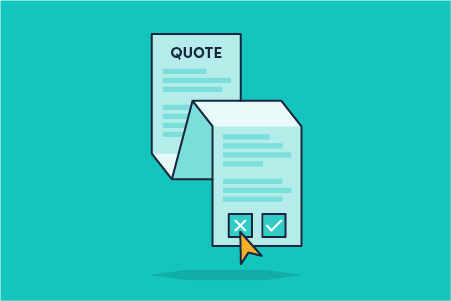The 4 mistakes insurance companies make: Why users don’t complete the quote process

Here are four major reasons that users quit the insurance process, and what insurers can do to improve their insurance forms.
1). Overly complicated
One issue that users experience while completing the online insurance quote process is that it is often much more complicated than is really necessary. This can lead to users quitting due to the fact that they can’t understand the information displayed on the page.
Insurance can be complicated, so insurers should be doing everything they can to simplify the information directed at users to avoid them abandoning. Write help text with your target user in mind. It should be concise, helpful, and well-written, free from technical and legal jargon. The help message is also a great opportunity to convey personality and warmth. Ensuring that the language used in forms is clear and easy to understand is a great first step.
Insurers can also benefit from improving the overall look of their forms, such as decluttering and shortening forms to improve UX. Adding images will also help to keep users’ attention.
It’s also important not to make assumptions. Users would rather answer a series of questions than read a single block of text. Sites that test well with users display each assumption as a question, providing a default answer which allows the users to scan the page before clicking ‘next’.
2). Question overload
Another mistake insurers often make is that they ask for too many personal details at the start of the process. This can overwhelm users, and is a key reason for them abandoning their insurance quote form.
Users are understandably irritated by questions they perceive as irrelevant or unimportant, such as “How did you hear about us”. If a question is not required to get a quote, remove it.
If the question is deemed important to the business, ask it during the application process, once the user has already committed to using your services.
For insurance companies who provide home insurance, a great tool that can be of enormous benefit is property intelligence data. Property intelligence reduces the number of questions that homeowners need to be asked about a property. This helps minimise the amount of time a user spends completing the quote process, while ensuring that you the insurer has all the information you need about a property in order to make a quote, such as type of property, size, number of rooms, distance from road, and any potential associated risks.
3). Too much typing required
The last thing time-strapped users want is to be typing endlessly, so long and complicated forms are a no-no. This is the part of the quote process can result in typos, and, as a result, data errors for insurers.
Data verification tools help combat this issue, improving UX and ensuring that the data insurers capture is clean and accurate.
For example, where users are required to enter their address, implementing a tool such as type-ahead address verification reduces keystrokes by up to 80%. This tool autosuggests addresses as soon as the user begins to type, even when typos are entered. This encourages users through to the next step of the process.
4) Lack of help
Users distrust a lack of prominent contact information, and dislike being asked to pay for a call that may result in giving a company business.
As such, it is best practice to display a free phone number and live chat service on all pages to ensure that users can reach you easily if they experience any issues along the insurance quote process.